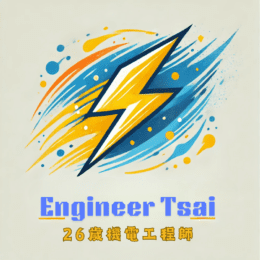🔗 Sources:
GamesRadar Hands-on Review:
The Nintendo Switch 2 officially launched on June 5, 2025. According to GamesRadar’s early impressions, it features an 8-inch OLED display, DLSS upscaling, ray tracing support, and the brand-new T239 SoC chip.
👉 GamesRadar Switch 2 Review in Progress
Notebookcheck Thermal Breakdown:
A detailed teardown reveals that the Switch 2 uses an active cooling system with a large rear exhaust. Overall thermal performance looks solid for a handheld.
👉 Notebookcheck Switch 2 Teardown Report
Business Insider Launch Buzz:
The global launch kicked off at midnight on June 5, drawing long lines at stores around the world. The Switch brand clearly still holds massive appeal among gamers.
👉 Business Insider Switch 2 Launch
“Wait, the Switch 2 is finally here… and the battery still doesn’t last three hours?”
That was the first thing someone in our office said while unboxing their brand-new console.
Nintendo’s long-awaited next-gen handheld is finally in players’ hands. But beyond the new titles and fancy features, the real question remains—do the promised hardware upgrades actually deliver?
In this post, we’ll break it down from an engineering perspective—looking at battery life, thermal design, power management, and structural choices—to understand what’s really going on under the hood of the Switch 2.

🔋 Battery vs. Performance : Is the Short Battery Life a Dealbreaker?
The Switch 2 runs on NVIDIA’s custom T239 SoC, delivering 5 to 10 times the performance of the original—but that power comes at a cost.
According to real-world testing:
- Light games like Link’s Awakening can last up to 5 hours
- Heavy AAA titles like Xenoblade Chronicles 4 drain the battery in just 2.5 hours
Even with a larger 6,300mAh lithium battery (up from 4,310mAh in the original), the 8-inch OLED display and real-time ray tracing push the limits of battery endurance.
From an engineering perspective, Nintendo didn’t just toss in a bigger battery and call it a day. Instead, they:
- Segmented power usage across different components
- Dynamically adjusted frequencies and voltages at the system level
- Fine-tuned power allocation based on brightness and performance modes
So if the battery life feels short, it’s not a design flaw—it’s a deliberate trade-off between performance and portability.
🌡️ Thermal Upgrades: What’s That Fan Noise?
For the first time in the Switch lineup, the Switch 2 uses active cooling with a fan—a big move that caught attention from gamers and engineers alike.
Notebookcheck’s teardown revealed:
- An ultra-thin dual-axis fan with smooth RPM control
- Heat sinks strategically placed over the GPU and power zones
- Average temperatures stayed between 38°C to 45°C in handheld mode
📌 Engineering note: Fan efficiency depends on thermal concentration. If the heat isn’t focused, airflow alone won’t help. Nintendo used internal heat pipes and thermal blocks to channel heat directly to the exhaust path, boosting cooling performance.
The only minor downside? There’s a faint high-pitched whirring when the fan kicks in—noticeable in super quiet environments, but not intrusive during gameplay.
⚙️ Dock Mode & Power System: Is Fast Charging Here?
Yes—Switch 2 now supports USB Power Delivery 3.0, topping out at 45W charging, which is a solid bump from the previous generation.
The upgraded dock includes:
- HDMI 2.1 support (theoretically capable of 4K@60fps output)
- USB-C input with E-Marker cable compatibility
- Improved voltage regulation chips and protective circuits
In practice:
- It takes around 1 hour and 45 minutes to fully recharge
- Using a high-wattage charger with the official USB-C cable yields the best results
- The system runs a bit warm while charging, but no overheating was observed
👉 From a hardware design perspective, Nintendo did a good job balancing power upgrades with existing infrastructure. But as games become more power-hungry, future docks might need to integrate additional cooling or supplemental power systems.

🖥️ Display Upgrade: OLED Brilliance with a Catch
The Switch 2 features a gorgeous 8-inch OLED display, boasting up to 1,000 nits of brightness, vivid contrast, and an expanded color gamut.
Pros:
- Ultra-vibrant colors and sharp detail
- Faster response time with noticeably reduced input lag
- Supports 120Hz refresh rate (though only in select titles)
Cons:
- High brightness settings drain battery quickly
- OLED burn-in is still a risk—auto-brightness and sleep timers are highly recommended
🧠 From an Engineer’s Perspective: The Handheld Barrier Has Been Broken
Looking back, the Switch 2 doesn’t just mark a performance leap—it redefines what handheld hardware can be.
Traditionally, the rules for mobile device design were simple:
Keep it light, maximize battery life, and stay low-power.
But Switch 2 proves something radical:
“You can be a high-performance machine—as long as you manage your thermals and power flow, you can fit it all in your palm.”
For engineers working in embedded systems, power modules, or thermal architecture, this is more than a console launch—it’s a masterclass in modern compact design.
📌 Recommended Reads for Curious Engineers:
🔹 “What Is Electricity ? Everything You Need to Know”
Whether it’s a handheld console or a data center, understanding power starts here.
🔹 “Capacitor Uses: How They Store and Release Energy”
Fast charging and voltage regulation? Capacitors are the silent heroes—this article breaks it down.
🔹 “Practical Guide to Inductance in AC Circuits: Design, Reactance, and Efficiency”
Surge protection, power filtering, and efficient charging—all powered by inductors.
💬 Did You Get the Switch 2 Yet?
Are you happy with its battery and thermal performance?
Drop a comment with your hands-on impressions, technical insights, or even your wildest DIY mods.
We might just do a teardown in the next post! 🔧


